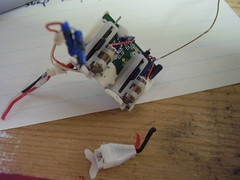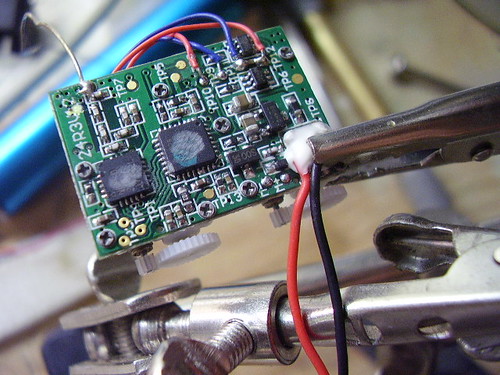Want to see videos of lasers shooting down migs?

This website has some very cool slow motion videos of mosquitoes. The first couple are mosquitoes in flight - captured at 6000 frames per second! Very interesting to watch how the wings work - there are micro-ornothopter improvements in there somewhere.
However, the 3rd video is where the money is. Sorry PETA - there were mosquitoes injured and/or killed in the making of this clip - and it is awesome. As the mosquitoes fly by, a laser burns their wings off - some go limp and so presumably are killed before hitting the floor.
Probably not the safest idea, but if this laser is in any way actively targeting these little pests - whoa that's impressive....
For those who are slightly confused, migs are what my family calls mosquitoes.
Update: There is more details about the technology - these guys claim to have built a device with parts from eBay that identifies (right down to male vs female mosquitoes), tracks and fires upon the pests when they fly between two fence posts up to 30m apart!

This website has some very cool slow motion videos of mosquitoes. The first couple are mosquitoes in flight - captured at 6000 frames per second! Very interesting to watch how the wings work - there are micro-ornothopter improvements in there somewhere.
However, the 3rd video is where the money is. Sorry PETA - there were mosquitoes injured and/or killed in the making of this clip - and it is awesome. As the mosquitoes fly by, a laser burns their wings off - some go limp and so presumably are killed before hitting the floor.
Probably not the safest idea, but if this laser is in any way actively targeting these little pests - whoa that's impressive....
For those who are slightly confused, migs are what my family calls mosquitoes.
Update: There is more details about the technology - these guys claim to have built a device with parts from eBay that identifies (right down to male vs female mosquitoes), tracks and fires upon the pests when they fly between two fence posts up to 30m apart!


